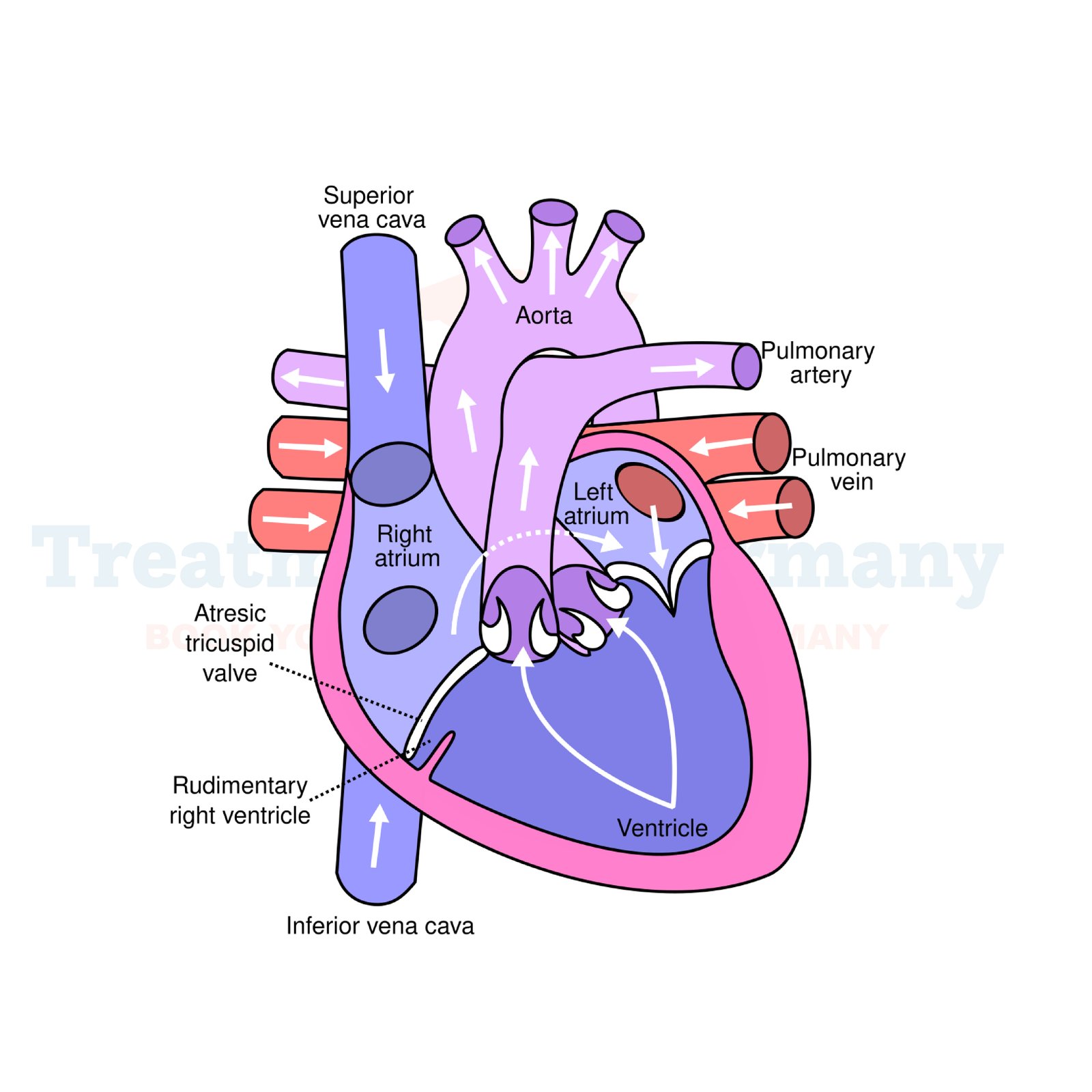What is Tricuspid Atresia:
Tricuspid atresia is a congenital heart defect characterized by the absence or severe underdevelopment of the tricuspid valve, which separates the right atrium from the right ventricle.
This condition disrupts the normal flow of blood from the body to the lungs, leading to complications in oxygenation and circulation. Essentially, it means that the blood cannot flow properly from the right side of the heart to the lungs for oxygenation.
Side effects of Tricuspid Atresia:
As a result of tricuspid atresia, patients may experience a range of symptoms and complications, including cyanosis (a bluish tint to the skin), shortness of breath, fatigue, poor growth and development in infants, and an increased risk of heart failure.
Without treatment tricuspid atresia can significantly impact the patient's quality of life and may lead to life-threatening complications over time.
How is Tricuspid Atresia diagnosed?:
Tricuspid atresia is typically diagnosed either before birth through fetal echocardiography or shortly after birth through physical examination and diagnostic imaging tests such as echocardiography, electrocardiography (ECG), and cardiac catheterization.
These tests help healthcare providers assess the structure and function of the heart and identify any abnormalities in blood flow.
Potential treatments of Tricuspid Atresia:
Treatment for tricuspid atresia aims to improve blood flow to the lungs and alleviate symptoms. The specific approach depends on the individual patient's condition and may involve one or more of the following:
1. Medications: Certain medications, such as diuretics and medications to help the heart pump more effectively, may be prescribed to manage symptoms and improve heart function.
2. Surgical interventions: In some cases, surgical procedures may be necessary to improve blood flow within the heart and to bypass the defective tricuspid valve. These procedures may include the creation of a shunt to direct blood flow or the performance of a series of staged surgeries to reroute blood flow and improve oxygenation.
3. Heart transplantation: In severe cases where other treatments are ineffective or not feasible, heart transplantation may be considered as a last resort. This involves replacing the patient's diseased heart with a healthy donor heart to restore normal cardiac function.
4. Cardiac catheterization: This minimally invasive procedure may be performed to repair certain defects associated with tricuspid atresia, such as enlarging narrow blood vessels or closing abnormal openings in the heart.
👉 Contact us for further information and receive a complimentary consultation.

.webp)
.webp)
 (1).webp)
 (1).webp)

.webp)
.webp)
 (1).webp)
 (1).webp)
